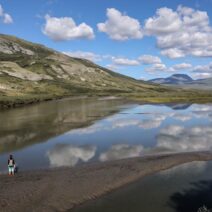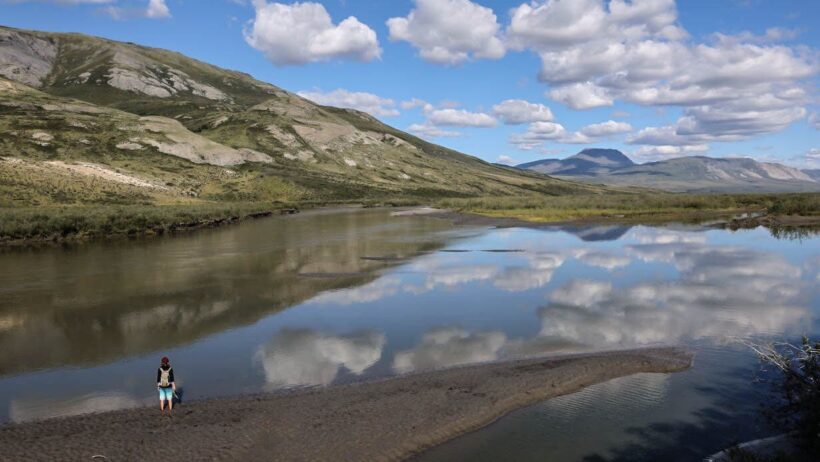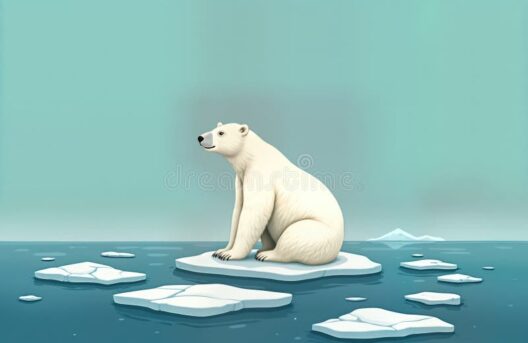As the world grapples with the repercussions of climate change, Alaska’s waters are emerging as a peculiar yet undeniable indicator of the shift in our planetary equilibrium. The Arctic, often viewed as an unforgiving expanse of ice, now finds itself in the throes of a transformative process. Just as a kaleidoscope changes its patterns with the slightest tilt, so too are Alaskan waters morphing under the influence of global warming.
The Arctic Ocean, encircling Alaska—this magnificent body of water, previously defined by its ice-bound majesty, now feels the warmth of the sun more aggressively than before. Studies indicate that average surface temperatures in the Bering Sea have experienced a significant uptick, with some regions reporting increases of over three degrees Fahrenheit in just a few decades. What was once a realm of glacial dominion increasingly resembles a temperate climate, raising alarms among scientists and environmentalists alike.
The profound shifts in temperature disrupt not only aquatic ecosystems but also terrestrial flora and fauna. Melting ice reduces the reflection of sunlight, introducing a phenomenon known as the albedo effect. With diminished ice coverage, more solar energy is absorbed by the ocean, further heating the waters and creating a feedback loop that is difficult to arrest. The delicate balance of life in this ecosystem teeters precariously as the waters warm. This creates challenges not only for indigenous species but also for migratory patterns that dictate fish behavior and breeding cycles.
As home to diverse marine life, Alaska’s waters are a critical habitat for species like salmon, seals, and polar bears. These creatures, like the villagers in an enduring folklore, depend on the stability of their aquatic domains. However, as temperatures rise, the fragile web of interdependence frays. Salmon, for instance, become increasingly susceptible to changing stream habitats—warm waters disrupt their intricate spawning cycles. The implications ripple across the food web, affecting not only marine organisms but the indigenous communities reliant on these species for sustenance and culture.
Moreover, species like krill, which serve as fundamental prey for larger marine animals, are acutely sensitive to temperature variations. Warmer waters can alter their life cycle and distribution, leading to a domino effect across the food chain. As predators are forced to adapt to the changing availability of their prey, the ecological balance continues to unravel. This phenomenon hints at a wider narrative, where climate change is not merely a remote theoretical concept but an encroaching reality with tangible consequences.
The socio-economic implications of rising Alaskan water temperatures are equally alarming. Indigenous fishing communities face declining stocks and shifting migration patterns, threatening their livelihoods and cultural practices. The changes in the ocean’s heartbeat reverberate through villages, altering age-old traditions and ways of life. Fishing, as a cornerstone of the Alaskan identity, finds itself under siege as regulations struggle to keep pace with the relentless march of climate change.
Yet, the human toll is not limited to the present. As marine ecosystems falter, there exists a lingering question about the future. The elemental connection between culture, identity, and environment is increasingly strained. As some species retreat to cooler habitats, the days of abundant fishing may fade into a distant memory. Will future generations of Alaskans experience the bounty of their ancestors? This poignant question hangs over the waters like a thick fog, compelling all to consider the ramifications of their actions on this fragile ecosystem.
Interestingly, as Alaskan waters warm, they also act as a bellwether for wider oceanic changes. The Arctic Ocean’s unique position as a frontline in the climate crisis serves to amplify the whispers of warning from scientists and environmental activists worldwide. This once-isolated region now finds itself interwoven into the fabric of global ecological discussions. The consequences of the rising temperatures in Alaskan waters extend far beyond local shores, shaping ocean currents that influence weather patterns globally. A shift in Arctic waters can mean altered monsoons in India, or intensified hurricanes in the Gulf of Mexico—illustrating the interconnected nature of our planet’s systems.
In combating such profound changes, the global community must unite in concert. Policies aimed at reducing emissions, enhancing renewable energy usage, and protecting marine biodiversity must gain precedence. A concerted effort to reduce plastic pollution, restore habitats, and conserve crucial ecosystems will be essential in mitigating climate impacts. The fight against global warming must be pursued with vigor and tenacity, keeping local communities and ecosystems at the forefront of this struggle.
In conclusion, the warming of Alaskan waters symbolizes more than just a regional phenomenon; it serves as a microcosm of the greater climate crisis affecting our planet. The implications ripple outward, affecting the ecological tapestry and the cultural fabric of communities. As we advance into a warmer future, it becomes paramount to heed the warnings that these majestic yet vulnerable waters offer, for they beckon a shared responsibility. The time for action is now; the clarion call from the Arctic is unmistakable, urging us to safeguard not just Alaskan waters, but the very integrity of our global ecosystem.





